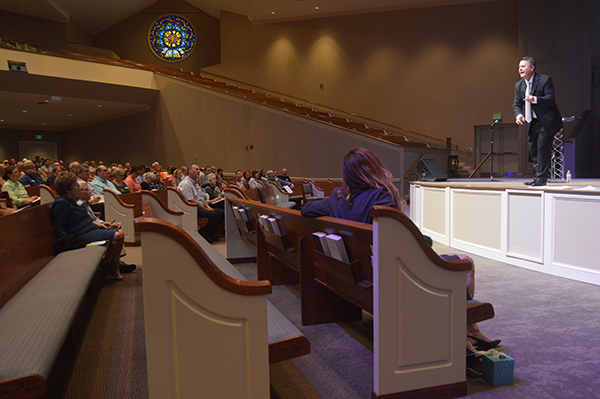By Grace Thornton
The Alabama Baptist
Greg Love says for the past 26 years he’s listened to story after story of child sexual abuse that’s happened in churches and tried to help church leaders figure out what went wrong.
The problem hasn’t changed in that time, said Love, a Texas-based attorney who is an expert in legal standards of care related to child sexual abuse.
But even though the problem hasn’t changed, churches haven’t necessarily gotten better at addressing it well, he said. Churches want to keep the predators away from their children, but they’re “building the wrong type of fence.”
“Not only do we have the wrong kind of fence, we think we’re fine,” said Love, who along with his wife and fellow attorney Kimberlee Norris, started MinistrySafe to help churches be proactive by taking steps to prevent sexual abuse from happening inside their walls.
The right kind of fence is never going to be in place because church leaders “just wake up one day and do this well,” he said. “It takes intentionality.”
With that in mind Love and Norris offered step-by-step resources to the several hundred people present at a Child Protection Workshop sponsored by the Alabama Baptist State Board of Missions (SBOM) and GuideStone Financial Resources at First Baptist Church, Trussville, on July 18.
A thorough guide to screening workers
Molesters have no visual profile, Norris said. It’s important that leaders be trained in how to ask the right questions of their staff and workers and be able to identify high-risk responses.
For starters communicate to applicants that your ministry screens heavily and monitors behavior.
Sometimes this will be enough to encourage potential abusers to walk away because they want to go where the barrier is the lowest, Norris said.
“Give all applicants the impression of ‘not in my church.’ Don’t chase volunteers for applications — give them an opportunity to bow out gracefully.”
Another place to tighten up is with background checks, Norris said. If a check comes back with any kind of hit never accept the person’s self-reported explanation of what happened.
All too often sexual abuse can be called “assault,” and potential volunteers could say, “It was just a bar fight from back in college.” For a charge of “indecency” they could explain it as just being caught using the bathroom in public.
One way to address this is to instruct them to bring you a copy of the police report. Then you can move forward with the application process, Norris said. If they bring it, it will have the details of why the person was charged. And if they don’t bring it, it’s another place where they can choose to bow out of the process.
Once you get past the initial application a thorough interview should be conducted, she said.
MinistrySafe offers long lists of helpful information for asking good interview questions and identifying risky responses or evasive answers. (For example, in response to the question, “Have you ever abused a child?” instead of answering with a simple, “No,” the interviewee says, “I would never abuse a child.”)
They also offer ways to look for possible high-risk responses. For instance if a person only has experience working with a certain age group and gender, that might not be a red flag — it could just mean the person has taught school and that’s the age he or she has worked with.
But combined with other potentially risky responses it could be a red flag.
Other potential red flags could be an unrealistic view of children (“I love working with children because they are so pure and angelic,” etc.) or shallow or short-term relationships with their references.
A five-part safety system
The screening process you just read about is part of a five-part system that MinistrySafe has developed to help churches protect their children.
The other steps are ensuring church staff is properly trained, using appropriate criminal background checks, putting tailored policies and procedures in place and enforcing monitoring and oversight of volunteers and employees.
More details are available at MinistrySafe’s website or at tabonline.org/protect-your-church.
Understanding the process of grooming
A big part of the problem is that the behavioral signs of an abuser are there, but other adults don’t identify what they are seeing as warning flags. A full list of such signs is at www.tabonline.org/prevent.
In addition to these resources and others MinistrySafe offers in-depth workshops on how to identify potential abusers and protect your church.
For more information call Lee Wright at the SBOM at 334-613-2241, contact Norris at 817-737-7233 or visit ministrysafe.com.






Share with others: